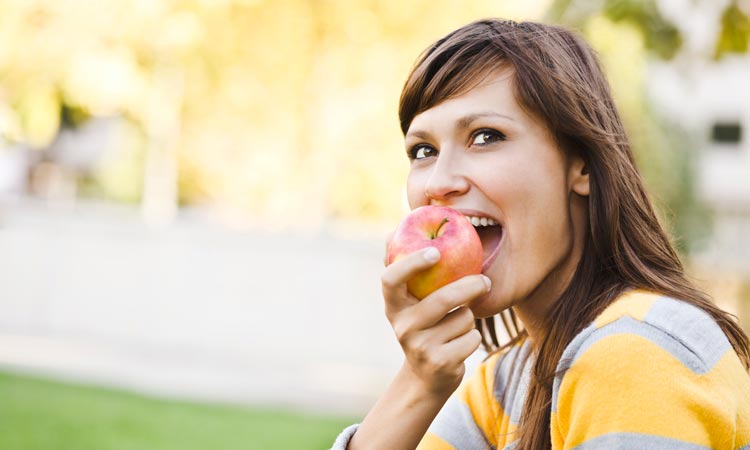How to pick fresher and more nutritious foods year round
We all know that the best fruit and produce is always what’s in season. When you buy it, not only do you support your health, but you support local farmers and businesses who can continue to bring it to you year-round. So if you happen to live in California and are craving strawberries, it’s best to hang on until February and March. If it’s December, you can satisfy your fruity, sweet craving with dates instead.
Here are eight examples of foods that are much better in season:
Apples
Apples may not always keep the doctor away, but these healthy foods are full of fiber and vitamins, particularly vitamin C. There are also hundreds of varieties available, from the sour Granny Smith to the sweet Red Delicious. Northern Spy apples, with their near-perfect blend of sweetness and sourness, are the most flexible for cooking, baking and snacking. But they have a very short growing season, from August to October, so you must plan accordingly.
Beach Plums
If bittersweet is your thing, the cheeky beach plum is for you. These hearty berries bloom in sand dunes from the end of August through September. East Coasters treat their appearance as sort of a “rite of passage” from summer to autumn.
Although you can pick this scrumptious fruit yourself, unless you’ve had some experience with them, it’s usually best to let a “pro” do the picking and buy them from that person. That’s because beach plums usually grow among poison ivy. As the summer wanes, the leaves of the poison ivy turn red, which forms a striking color palette with the dark blue of the beach plums.
Raspberries
These succulent delights have a long growing season from May to November every year. Their delectable texture and superior flavor mix with their vitamin-rich, heart-healthy composition to make them one of the best fruit choices you can make for seasonal eating.
A cup of raspberries has only 64 calories, so snacking on them is both satisfying and healthy.
They spoil easily, however, and must be eaten quickly. Fortunately, this is not usually a problem! Simply grab them by the handful and devour them.
Pears
Similar to raspberries, pears have a long growing season, which lasts from August through February. Their winter hardiness makes them prime candidates for holiday treats. Many people know only the Bosc and Bartlett varieties, but there are more than 3,000 species of pears in the world. They cover almost every continent, and their flavors range from super-sweet to delicately tart.
Nutritionally, they provide minerals more than vitamins. You have to remember that most of these minerals are in the skin. The flesh has some vitamins in it, but not nearly as many as the more acidic fruits.
Corn
Corn is in season from May to November. In most areas, however, the best corn is available from about the second week of August through Labor Day. As they say, it should be “knee high by the Fourth of July” and “picked all the way by Labor Day.” Corn is high in B complex vitamins, such as:
- Thiamine (B1)
- Niacin (B3)
- Pyridoxine (B6)
It also contains many minerals, such as magnesium, iron and phosphorous.
Green Onions
Also called scallions, these tasty morsels are less pungent than their larger, grown-from-bulbs cousins. They’re usually available in season from July through November.
Green onions must be kept in a cool, dry place. The best place is in your refrigerator’s crisper drawer, where they will stay fresh for awhile. They’re also quite healthy, loaded with vitamin C, flavonoids and other polyphenols – the latter two reduce the risk of certain cancers. And if you’re looking for tasty places to get your fiber, look no further than the humble green onion.
Rhubarb
While the leaves of rhubarb are inedible, the dark pink stalks are the stuff of legends from May to July. The taste is distinctly tart, and bakers and cooks alike pair rhubarb with other fruits and vegetables to balance its acidity.
If you prefer your rhubarb sweeter, you can visit a farm that “forces” it. Forced rhubarb is grown indoors, usually in a small, enclosed space that is heated by a coal fire. If you’re lucky enough to find a farm that forces its rhubarb, you can also get it later in the year because forcing lengthens the growing season.
Blueberries
The quintessential summer fruit, the blueberry, grows copiously from June to early September. If you buy fresh blueberries, they will keep longer in the refrigerator if you don’t wash them first. Usually, they will last a week this way, whereas they might only last a day if you do wash them.
If you have any questions about these or other produce items, I’d be happy to hear from you. And while you’re here, be sure to explore all the other informative articles on my website. Happy seasonal eating!



